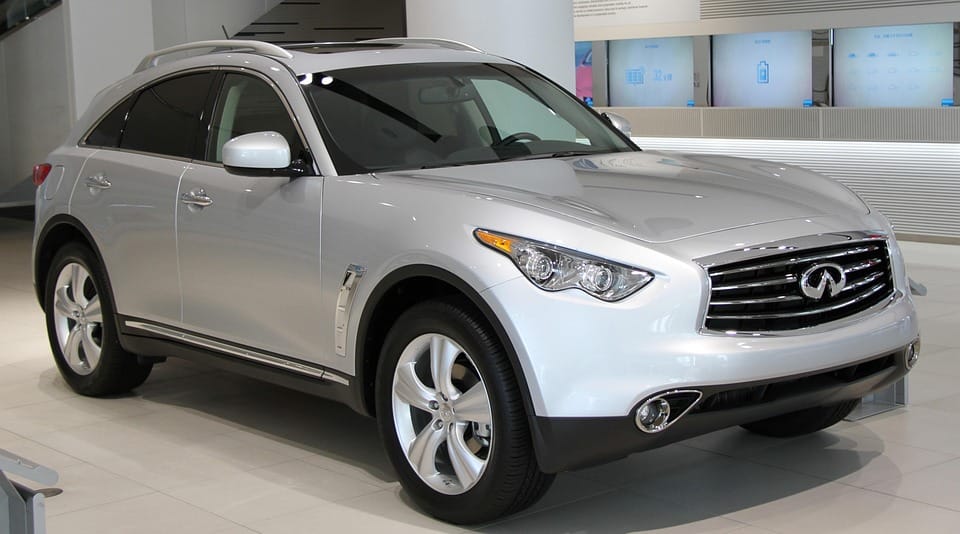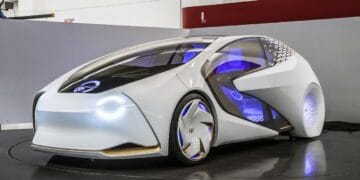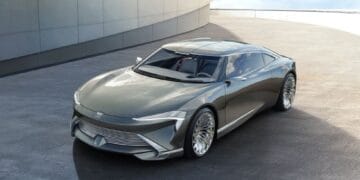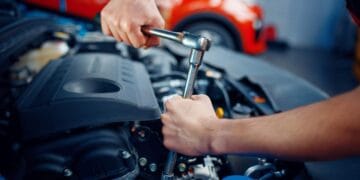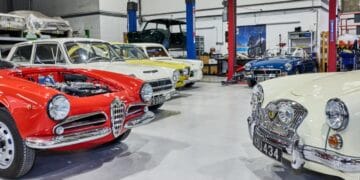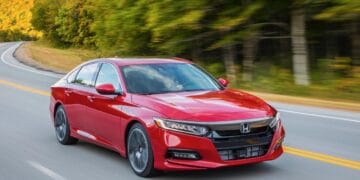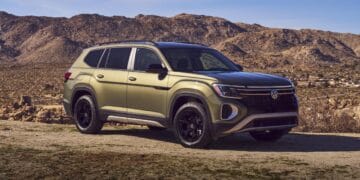Hybrid SUV Surge: Analyzing Global Market Growth
The global automotive landscape is undergoing a monumental shift, characterized by an unprecedented acceleration in the adoption of electrified vehicles. Within this green transition, one segment stands out as the uncontested champion of immediate consumer demand: the Hybrid SUV. The dramatic rise in Hybrid SUV sales globally is not merely a transient trend; it represents a convergence of consumer preference for utility and efficiency, regulatory pressure towards decarbonization, and technological advancements that bridge the gap between traditional combustion engines and a fully electric future. This remarkable surge is reshaping manufacturing priorities, dealer inventories, and the long-term strategic outlook of every major automaker.
Defining the Hybrid Utility Vehicle Phenomenon
To fully appreciate the sales explosion, one must first understand the product driving it: the Sports Utility Vehicle (SUV) powered by a hybrid drivetrain.
A. The Evolution of the SUV
The SUV’s popularity stems from its fundamental attributes, which appeal to a broad demographic worldwide.
- Utility and Versatility: Offering generous passenger and cargo space, making them ideal for families and varying lifestyle needs.
- Perceived Safety: The higher ride height provides a sense of command on the road and a perception of greater safety in collision scenarios.
- Aesthetic Appeal: Modern SUV designs have moved past rugged utility to embrace sleek, often luxurious, styling.
B. The Hybridization Imperative
Integrating hybrid technology into the already popular SUV form factor has created a highly compelling value proposition, particularly in markets hesitant to commit fully to Battery Electric Vehicles (BEVs).
- Efficiency without Range Anxiety: Hybrid Electric Vehicles (HEVs) use a combination of a gasoline engine and an electric motor/battery pack to improve fuel economy significantly without requiring the driver to plug in or worry about running out of charge.
- Performance Boost: The electric motor provides instant torque, enhancing acceleration and providing a smoother, quieter driving experience, particularly at lower speeds.
- Regulatory Compliance: Hybrids help automakers meet increasingly stringent global emission standards (e.g., Euro 7, CAFE standards) while maintaining high-volume sales.
Key Drivers Fueling the Global Sales Boom
The simultaneous growth of both the SUV body style and hybrid technology has created a powerful synergy. Several structural factors are underpinning this sustained high sales volume.
A. Economic and Fuel Price Volatility
Consumer behavior is highly sensitive to the cost of ownership, making fuel efficiency a non-negotiable factor.
- Inflation and Energy Costs: Global geopolitical instability and market forces have led to consistently high and volatile gasoline prices, making the superior mileage of hybrids an attractive financial hedge for consumers.
- Lower Total Cost of Ownership (TCO): While the initial purchase price of a hybrid SUV is often higher than its pure gasoline counterpart, the savings accrued from reduced fuel consumption and often lower maintenance (due to regenerative braking extending brake life) offset the premium over the vehicle’s lifespan.
B. Regulatory Pressure and Government Incentives
Governments worldwide are actively pushing for electrification to meet climate commitments, directly influencing consumer choice.
- Favorable Tax Structures: Many countries offer substantial tax breaks, reduced registration fees, or purchase rebates specifically for Plug-in Hybrid Electric Vehicles (PHEVs) and, to a lesser extent, HEVs, making them financially competitive with traditional vehicles.
- Emissions Zones and Access Restrictions: Growing urban areas are implementing Low Emission Zones (LEZs) where high-polluting vehicles face restrictions or daily charges. Hybrids, especially PHEVs with a decent electric range, often qualify for exemptions, making them practical for city driving.
C. Technological Maturity and Drivability
Early hybrid systems were often criticized for complex, less-than-seamless driving dynamics. Modern systems have overcome these drawbacks.
- Improved Battery Technology: Smaller, lighter, and more energy-dense battery packs (e.g., Lithium-ion) are now standard, allowing for greater electric-only driving capability and better packaging within the SUV chassis.
- Sophisticated Power Management: Advanced Electronic Control Units (ECUs) manage the transition between the gasoline engine and electric motor virtually imperceptibly, enhancing comfort and responsiveness.
- Expansion of PHEV Options: Plug-in hybrids, which offer 30-60 miles of pure electric range, appeal to consumers who primarily drive short distances but still need the security of a gasoline engine for long road trips.
 Regional Analysis: Disparities in Hybrid SUV Adoption
Regional Analysis: Disparities in Hybrid SUV Adoption
While the global trend is upward, the sales mix and primary drivers vary significantly across the world’s major automotive markets.
A. North America (United States and Canada)
This region is characterized by a strong preference for large vehicles and is currently a major engine for hybrid SUV growth.
- Market Size and Scale: The sheer size of the American market means even a small shift in preference results in massive sales volume increases.
- Focus on Large Hybrids: Demand is high for mid-size and full-size hybrid SUVs and hybrid trucks, reflecting the desire for capability (towing, all-wheel drive) paired with improved MPG figures.
- Brand Loyalty and Trust: Established Japanese brands (Toyota, Honda) that pioneered hybrid technology hold significant market share, lending trust and reliability to the segment.
B. Europe (EU and UK)
Europe’s transition is driven aggressively by regulatory deadlines, making PHEVs a critical short-term compliance tool.
- PHEV Dominance: Regulatory incentives often favor PHEVs heavily over HEVs, especially for fleet sales, pushing manufacturers to prioritize plug-in versions of their popular SUV models.
- Focus on Compact and Crossover Hybrids: Given the smaller road infrastructure and higher fuel costs, smaller crossover SUVs (C-segment) with hybrid powertrains are the primary sellers.
- Strong BEV Competition: Europe is also a global leader in BEV adoption, meaning hybrid SUVs face fierce competition from fully electric models that receive even greater government support.
C. Asia-Pacific (China, Japan, South Korea)
The APAC region presents a mixed but rapidly accelerating landscape, often dictated by centralized policy.
- China’s New Energy Vehicle (NEV) Policy: Government quotas and subsidies in the world’s largest auto market classify PHEVs (and often advanced HEVs) as NEVs, driving massive investment and rapid growth, particularly among domestic brands.
- Japan’s Hybrid Heritage: Hybrid technology is deeply ingrained in the Japanese market due to decades of domestic leadership, making hybrid SUVs a default choice for many consumers.
- Infrastructure Gaps: In many Southeast Asian nations, the lack of widespread public charging infrastructure makes HEVs and PHEVs the most practical form of electrification for the near future.
A Deeper Dive: The Three Types of Hybridization
The term “Hybrid SUV” encompasses multiple technologies, each with different performance, efficiency, and cost profiles. A complete analysis of the sales surge requires differentiation.
A. Mild Hybrid Electric Vehicle (MHEV)
MHEVs represent the lightest form of hybridization, offering minimal electric power but significant efficiency gains.
- Functionality: Uses a small battery (typically 48-volt system) and an integrated starter generator (ISG) to assist the engine during acceleration and recapture energy during deceleration.
- Impact on Sales: Acts as an accessible entry point, allowing automakers to quickly electrify existing gasoline engines to meet basic emissions standards with minimal redesign and cost impact.
B. Hybrid Electric Vehicle (HEV) – Full Hybrid
HEVs are the classic hybrid model and currently dominate the global sales volume for non-plug-in electrification.
- Functionality: Can operate the vehicle solely on electric power for short distances and at low speeds (e.g., in traffic), or run on a combination of gasoline and electric power. It charges its battery only through regenerative braking and the gasoline engine.
- Impact on Sales: Appealing to the mass market because there is zero operational change required from the driver (no need to plug in), maximizing convenience and minimizing anxiety.
C. Plug-in Hybrid Electric Vehicle (PHEV)
PHEVs offer the greatest flexibility and the longest electric-only driving range among hybrids, but depend on driver behavior for maximum benefit.
- Functionality: Features a larger battery pack that must be plugged into an external electricity source to recharge. Can typically drive 20 to 50 miles purely on electric power before the gasoline engine starts.
- Impact on Sales: Highly successful in corporate fleet sales and regions with strong tax incentives, appealing to buyers who want to commute emission-free but require the gasoline backup for long journeys.
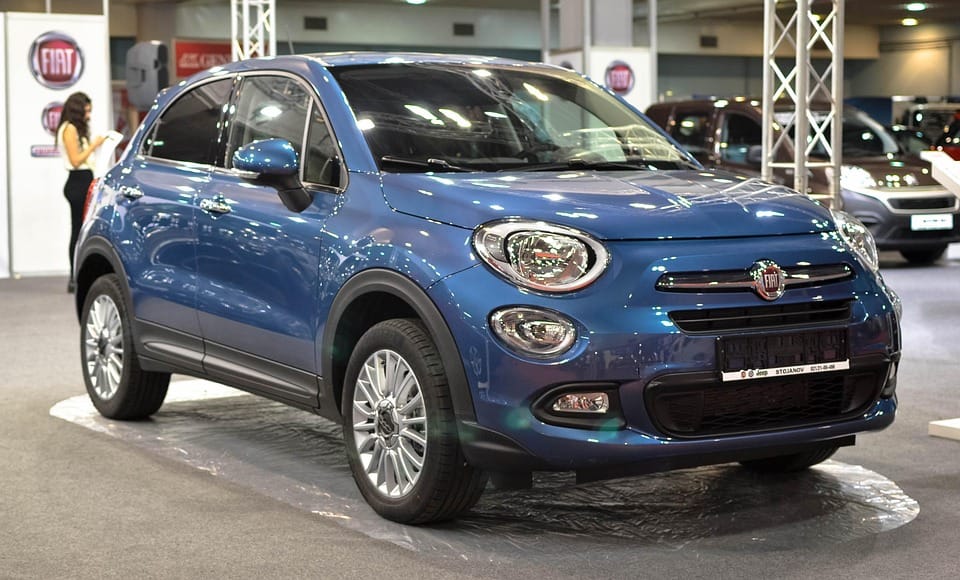 Challenges and Future Competition
Challenges and Future Competition
Despite the stellar sales performance, the hybrid SUV segment faces inherent challenges and intense future competition, primarily from its fully electric counterparts.
A. The Cost Premium and Complexity
The added components of a hybrid system increase the complexity and initial price of the vehicle compared to an equivalent pure gasoline model.
- Battery Replacement Costs: While rare, the long-term potential for expensive battery replacement remains a psychological barrier for some consumers, despite warranties.
- Maintenance Complexity: Hybrid powertrains require specialized training and tools for diagnosis and repair, potentially increasing maintenance costs over the long term, especially outside authorized dealer networks.
B. The Looming Threat of Pure EVs (BEVs)
The hybrid SUV is widely viewed as a transitional technology. As battery costs drop and charging infrastructure expands, BEVs will become increasingly competitive.
- Zero-Emission Mandates: Several major markets (e.g., Norway, parts of California, the European Union) have established firm deadlines for phasing out the sale of all combustion engine vehicles, including HEVs and PHEVs.
- Technological Innovation: BEV technology is rapidly advancing in areas critical to SUVs, such as towing capacity, all-wheel drive performance, and charging speed, eroding the competitive advantages of hybrids.
- Shifting Incentives: Governments are increasingly reducing or eliminating incentives for PHEVs and HEVs to focus limited resources solely on boosting BEV adoption.
C. The Perception of “Compromise”
Some consumers view the hybrid powertrain as a compromise, carrying the weight and maintenance of two distinct systems (electric and combustion) without fully realizing the benefits of either. Critics argue PHEVs often fail to deliver optimal real-world fuel economy when the battery is depleted or if the driver fails to plug in regularly.
Conclusion
The monumental surge in Hybrid SUV sales globally underscores the segment’s role as the crucial, necessary bridge in the automotive industry’s electrification journey. The Hybrid SUV successfully solves the immediate consumer dilemma: how to achieve meaningful fuel efficiency and reduced emissions without sacrificing the utility and range security of the traditional vehicle.
While the long-term forecast points inevitably toward a fully electric future, the present market demands flexibility. For the next decade, Hybrid SUVs will continue to dominate sales figures by providing the optimal blend of practicality, efficiency, and accessibility. Automakers that can effectively manage the transition—offering a diverse portfolio of efficient HEVs, long-range PHEVs, and compelling BEVs—will capture the largest share of this evolving global automotive market. The continued success of the hybrid SUV is proof that, for the world to go electric, it must first go hybrid.

